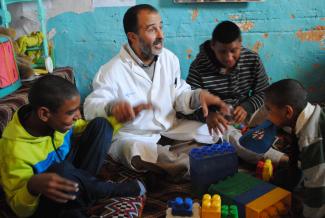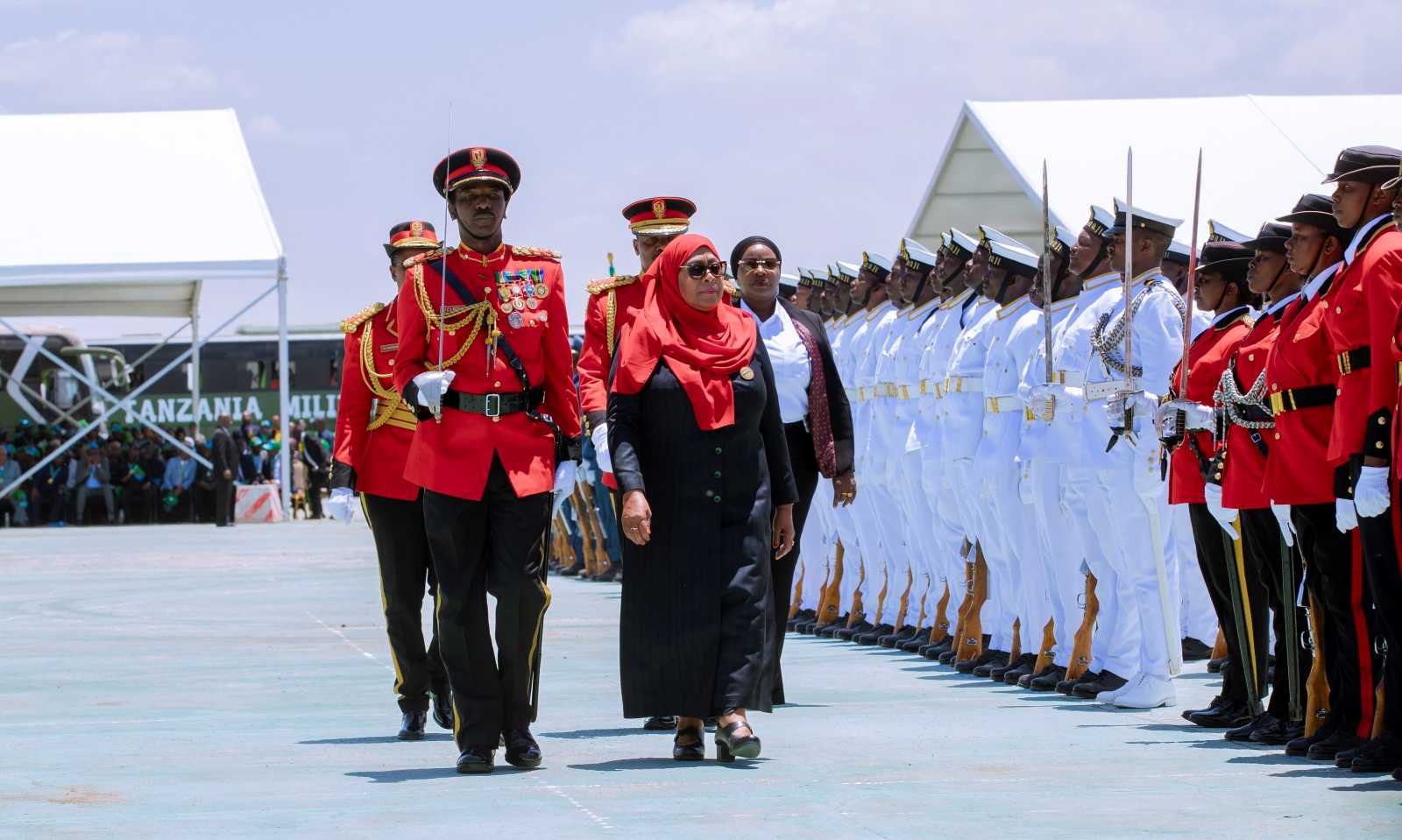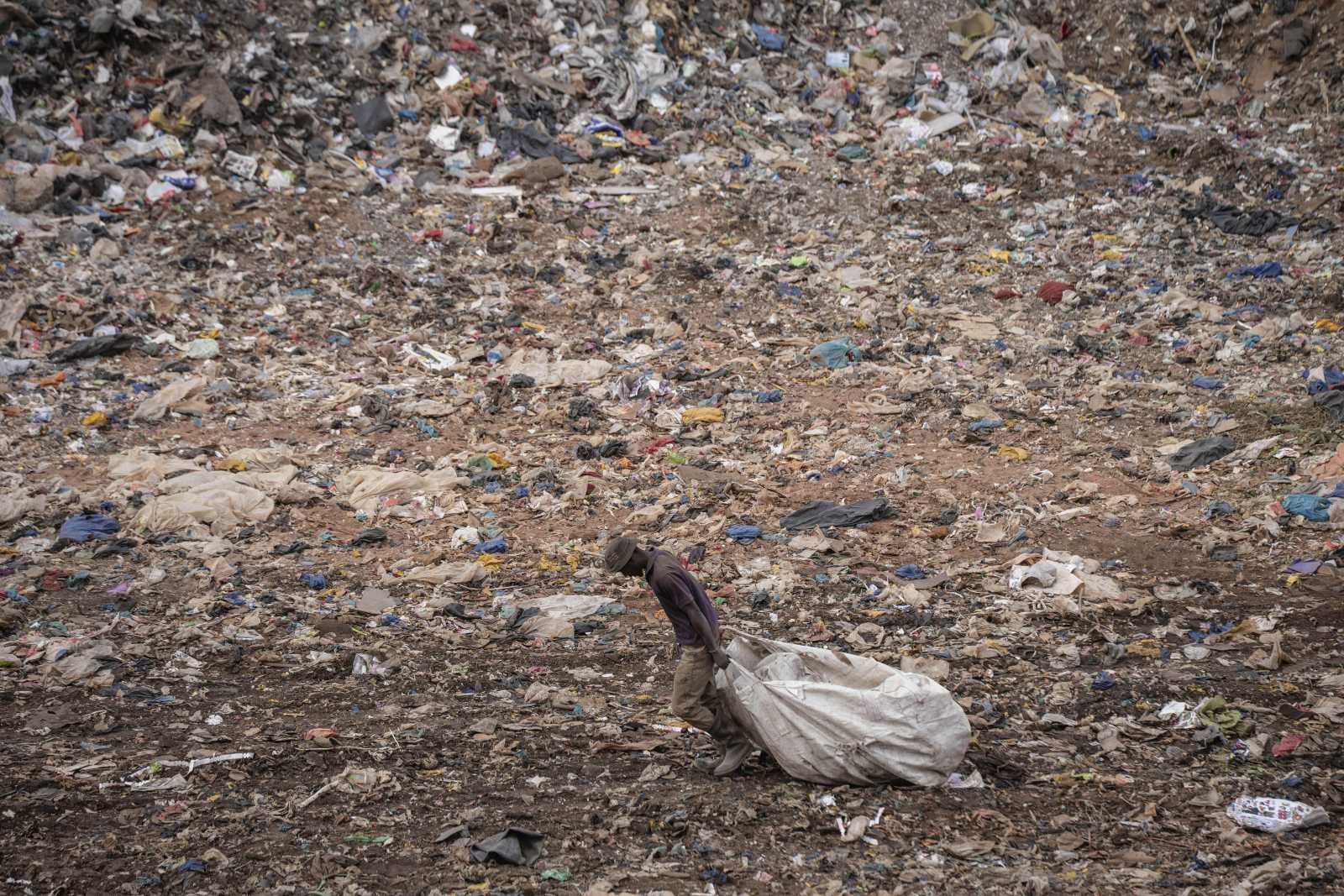Refugees
A hard life in the desert

He has three colours to choose from: olive, brown and grey. There is one for every skin tone. Menhem Arab is not selling make-up or a clothing label’s latest collection; he assembles artificial legs. The grey-haired man in amber-tinted glasses is a trained orthopaedic technician. He heads the Martyr Sharif Orthopaedic Centre, which is located in one of the Algerian camps where Sahrawis have found refuge.
The Sahrawis have suffered more than almost any other people in the world from mines. The Moroccan army deployed the explosive devices. To date, 352,000 square metres have been cleared of landmines, cluster munitions and other explosive remnants of war. Nevertheless, uncontrolled explosions remain common. Western Sahara is considered the last remaining colony in Africa. When Spain withdrew from “Spanish Sahara” in 1976, neighbouring Morocco and Mauritania marched in. Both nations claimed that Western Sahara was rightfully theirs because of old tribal links. The Polisario Front, a resistance movement that had already formed under Spanish rule, was the third competitor for control of the territory. It is best understood as a national liberation movement that is fighting for Sahrawi people.
On 27 February 1976, one day after Spain’s withdrawal, the Polisario proclaimed the “Sahrawi Arab Democratic Republic” and – with the support of Algeria – took up arms against the new occupants. There was initial success. Mauritania was surprised by the stubborn Polisario resistance and withdrew from Western Sahara in 1979. However, Morocco’s de facto annexation of large portions of the land persists to this day. In 1991, the two sides finally agreed to a cease-fire, which is still in place.
Homeless people
Today, the Sahrawis are scattered over three different regions. In one zone, which is occupied by Morocco along the Atlantic coast and comprises most of Western Sahara’s territory, approximately 120,000 Sahrawis live alongside 300,000 Moroccan settlers. All major cities are in this area. Another 167,000 Sahrawis have found asylum in refugee camps near the Algerian city of Tindouf. Between the Moroccan-held territory to the west and Algeria and Mauritania to the east, the Polisario Front is retaining control over a narrow “free zone”, in which only a few thousand people live.
The Polisario-held territory is separated from the “occupied zone” of Western Sahara by a 2,720 kilometre-long sand wall, called the “Berm”. This sand wall has been heavily guarded since it was built by Morocco in the 1980s. Its land is considered to be among the world’s most densely mined stretches.
Menhem Arab has directed the Orthopaedic Centre, which is operated by the International Red Cross, since 2008. The prothesis components the centre uses are imported from Switzerland. The artificial limbs are assembled on-site and individually fitted. Arab has a hard time finding competent employees however. He depends on Sahrawis who were able to afford an education abroad and returned here to help their compatriots.
Action on Armed Violence (AOAV), a British non-governmental organisation, estimates that almost 1,400 civilians have fallen victim to landmines and cluster munitions since the beginning of the conflict with Morocco. Of these people, over 450 had to undergo amputations. The real number is probably higher since the Sahrawi mine victims who live in the Moroccan-held area are not included in official statistic.
At the local level, AOAV cooperates closely with the Polisario Front and the Sahrawi aid organisation ASAVIM (Asociación Saharaui de Victimas de Minas). With the support of AOAV, the Polisario Front has destroyed well over 10,000 anti-personnel mines since 2005.
A relatively normal life with the artificial limbs
About a third of the people who survive stepping on cluster munitions or landmines have to have limbs amputated. Most of the mine victims are members of half-nomadic Bedouin families who live east of the mined fortification. All too often, playing children step on one of the estimated 7 million mines. If they survive at all, they are seriously injured. Menem Arab says that torn-off limbs, particularly legs, are the most common injuries treated in the camp hospital, or in more complicated cases, in the Algerian military hospital in Tindouf.
Every two hours, someone falls victim to a landmine or cluster munitions somewhere in the world. One third of the victims are children.
In the Sahrawi camps in Algeria, people with disfigurements and missing limbs are an everyday sight. With the protheses that his centre provides, Menhem Arab helps many of the affected people to live the most normal life possible under these harsh circumstances. The people do not have to go far to take care of their daily needs in the camps, and all the buildings are only one storey tall. However, the endless desert sand is hardly accessible to people with handicaps.
The landscape of this part of the Sahara is called the Hamada. It is considered the driest, most barren region. It is a desert within a desert. Travel is next to impossible without an all-terrain vehicle. That is especially true for people who must rely on crutches, artificial limbs or wheelchairs.
Many people with physical disabilities have formed self-help groups. The Sahrawi authorities do not have the financial means to take care of them adequately. The AOAV assists 48 self-help groups, while approximately 150 more groups do not get support.
Because of a lack of official statistics, only a rough estimate can be made of the number of physically disabled people living in the Sahrawi refugee camps in the Algerian desert. In addition to the civilian mine victims, there are probably many thousands of disabled Polisario fighters. Moreover, many people suffer from trauma as a result of the war with Morocco.
The Sahrawi health ministry, which is based in one of Algeria’s five Sahrawi refugee camps, is trying to organise aid for the affected families. This is no easy task because the ministry’s financial resources are very limited. Most affected persons are not registered systematically, and statistical surveys do not necessarily meet scientific standards. The ministry can provide more precise information on the number of people living with intellectual disabilities in the camps. It registered 292 cases earlier this year.
School for the intellectually disabled
The ministry was only able to count them because the people in question have a high-profile advocate. His name is Buyema Fateh, but everyone in the camps simply calls him Castro. He was given the nickname when he was young: his friends said he looked like the Cuban revolutionary Fidel Castro. The Sahrawi Castro founded the world’s first – and to date only – school for people with intellectual disabilities that is located in a refugee camp.
“Years ago, when the Sahrawis were still nomadic, disabled people were tethered in tents all day long, for their entire lives. And if the tent happened to catch on fire, no one tried to save them,” Castro recalls. “Even relatively recently, intellectually disabled children spent their days tied in tents and were only let out at night on a leash because their families were ashamed of them.”
His voice shakes with outrage when he talks about these practices. When he realised, as a young man, how Sahrawi society treated disabled children, he felt deeply ashamed. Seven years ago, the former Polisario fighter quit his military service to open a school for children with intellectual disabilities. The school is in Smara camp, the largest of the five Sahrawi camps, which is located among cliffs and dunes under a blazing sun.
It is breakfast time. Castro says that it’s his turn to give everyone water today. He begins pouring it from a brass jug into the cups of the children to his right. The school is founded on the principle of equality, Castro explains. Today he is pouring the water, and tomorrow someone else will do. He wants the children to see that they are just as important to the community as every other child, teacher or person in the camps.
“We make no distinction between boys and girls,” Castro continues. “We want to show the children that we are all equal before God.” All children here learn handicrafts like sewing, cooking or carpentry according to their individual abilities. Normally, it does not take the children long to discover their personal passion, Castro says. Many children also learn reading, writing and arithmetic at his school, and they benefit from the school library. Ultimately, the idea is to help the kids to lead an independent life one day.
Castro remembers how other people in the community initially mocked his idea. “They thought I was crazy, drunk or on drugs. They said I should be a patient in my own school.” Nobody talks like that anymore. Castro has become one of the most prominent and well-respected people in the Sahrawi camps. “We regularly have visitors from abroad: doctors and teachers, students and professors, as well as politicians from Europe and Asia. Everyone wants to see our school in the refugee camp.” Even the Algerian president, Abdelaziz Bouteflika, has been here, Castro reports.
More schools are needed
Once a week, Castro meets with his team, which has grown to include ten people, to share impressions and insights. They discuss the academic success of the students and consider the problems that have arisen in the course of the week. Castro and his team use a four-wheel-drive to bring 59 youngsters to school in the mornings. They pick them up before breakfast and return them to their families after lunch.
“Our school is bursting at the seams,” Castro says. “Even parents from the other camps want to send their children here. But we don’t have the capacity to accommodate them.” Sahrawis in the other camps have to take up this task, he argues.
Like almost all Sahrawi institutions in the refugee camps, Castro’s school depends on financial support from Algeria. That funding does not meet all needs, so Castro also relies on donations from Europe, in particular in regard to the medical supplies he stores in a schoolroom. “Despite all the help we receive from the Algerian government, our school couldn’t keep its doors open for long without regular monetary and in-kind donations from Europe,” he says.
Menhem Arab, the director of the Orthopaedic Centre, says that the people with disabilities in the camps are comparatively lucky: “The community of Sahrawis in the refugee camps has remained very homogeneous over the decades. That helps them stick together. Nevertheless, living with a disability in the desert sand, at these temperatures, is an especially hard fate.”
Frank Odenthal is a freelance journalist specialising in development and environment issues.
frank.odenthal@posteo.de







